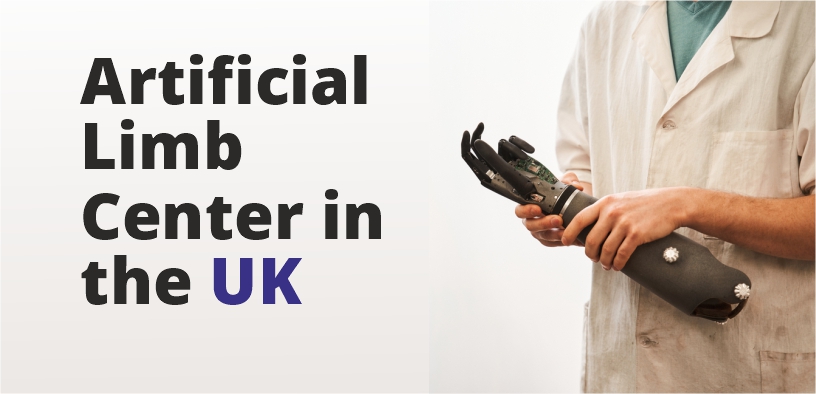The United Kingdom, with its rich history of innovation and compassion, is home to a network of dedicated artificial limb centres. These centres serve as beacons of hope for individuals facing limb loss, offering them the opportunity to regain not only their mobility but also their independence and zest for life. In this comprehensive guide, we will explore the world of artificial limbs in the UK, from finding the finest Artificial Limb centre to understanding the cost and gaining expert insights.
Understanding Artificial Limbs in the UK
Artificial limbs, commonly known as prosthetics, are custom-made devices designed to replace lost or damaged body parts. Whether due to congenital conditions, traumatic accidents, or medical procedures, the need for prosthetic limbs is diverse. The advancement of technology has revolutionised the field, resulting in prosthetics that are both functional and aesthetically lifelike.
Choosing the Best Artificial Limb Centre
Selecting the right artificial limb centre is a critical step in the journey to regaining mobility. Here are key factors to consider:
- Accreditation: Ensure that the centre is accredited and staffed by certified prosthetists who possess the necessary expertise in designing and fitting artificial limbs.
- Comprehensive Services: The top artificial limb centres offer a wide range of services, including thorough assessments, personalised fittings, training, and ongoing care.
- Cutting-Edge Technology: Inquire about the use of advanced technology and materials in prosthetic devices. Modern innovations significantly enhance both the functionality and comfort of artificial limbs.
- Personalised Care: Seek a centre that prioritises a patient-centred approach. Effective collaboration between the prosthetist and the patient ensures that the prosthesis is tailored to individual needs and goals.
Cost of Artificial Limbs in the UK
The cost of artificial limbs in the UK can vary widely, depending on several factors:
- Type of Prosthesis: The complexity of the prosthesis, as well as the materials used, can significantly influence the cost. Prosthetic limbs range from basic to highly advanced.
- Funding and Insurance: Many individuals in the UK receive funding or insurance coverage for prosthetic devices. The level of coverage depends on the specific circumstances and insurance policies.
- Additional Expenses: Consider additional costs such as fitting adjustments, maintenance, and potential replacements over time.
Expert Insights and FAQs
Here are some expert insights and frequently asked questions about artificial limbs:
Q1: What is the process of obtaining a prosthetic limb in the UK?
A1: The process typically involves an initial assessment by a prosthetist who evaluates your needs and goals. After that, a customised prosthesis is designed and fabricated. Fittings and adjustments follow to ensure a comfortable fit, with ongoing follow-up care as needed.
Q2: Can children and teenagers receive prosthetic limbs in the UK?
A2: Absolutely. Many artificial limb centres in the UK specialise in providing prosthetic solutions for children and teenagers. These prostheses are designed to accommodate their growth and changing needs.
Q3: Do artificial limbs require regular maintenance?
A3: Yes, like any other medical device, prosthetic limbs require regular maintenance to ensure optimal performance. This may include periodic adjustments, repairs, and component replacements. Prosthetists provide guidance on maintenance routines.
Q4: Is it possible to upgrade a prosthetic limb as technology advances?
A4: Yes, prosthetic limbs can often be upgraded with the latest technology and components. Many individuals choose to upgrade to take advantage of advancements in functionality and comfort.
Q5: How can I find financial assistance or funding for a prosthetic limb in the UK?
A5: There are various avenues for financial assistance, including government programmes, private insurance, and charitable organisations. Prosthetists and artificial limb centres often have resources to help patients explore funding options.
Q6: What role do rehabilitation and physiotherapy play in adapting to a prosthetic limb?
A6: Rehabilitation and physiotherapy are crucial aspects of the prosthetic journey. They help individuals adapt to their new limb, regain strength and mobility, and ensure that they can confidently and comfortably use their prosthesis in daily life. Many artificial limb centres offer rehabilitation services or can provide referrals to specialists.





